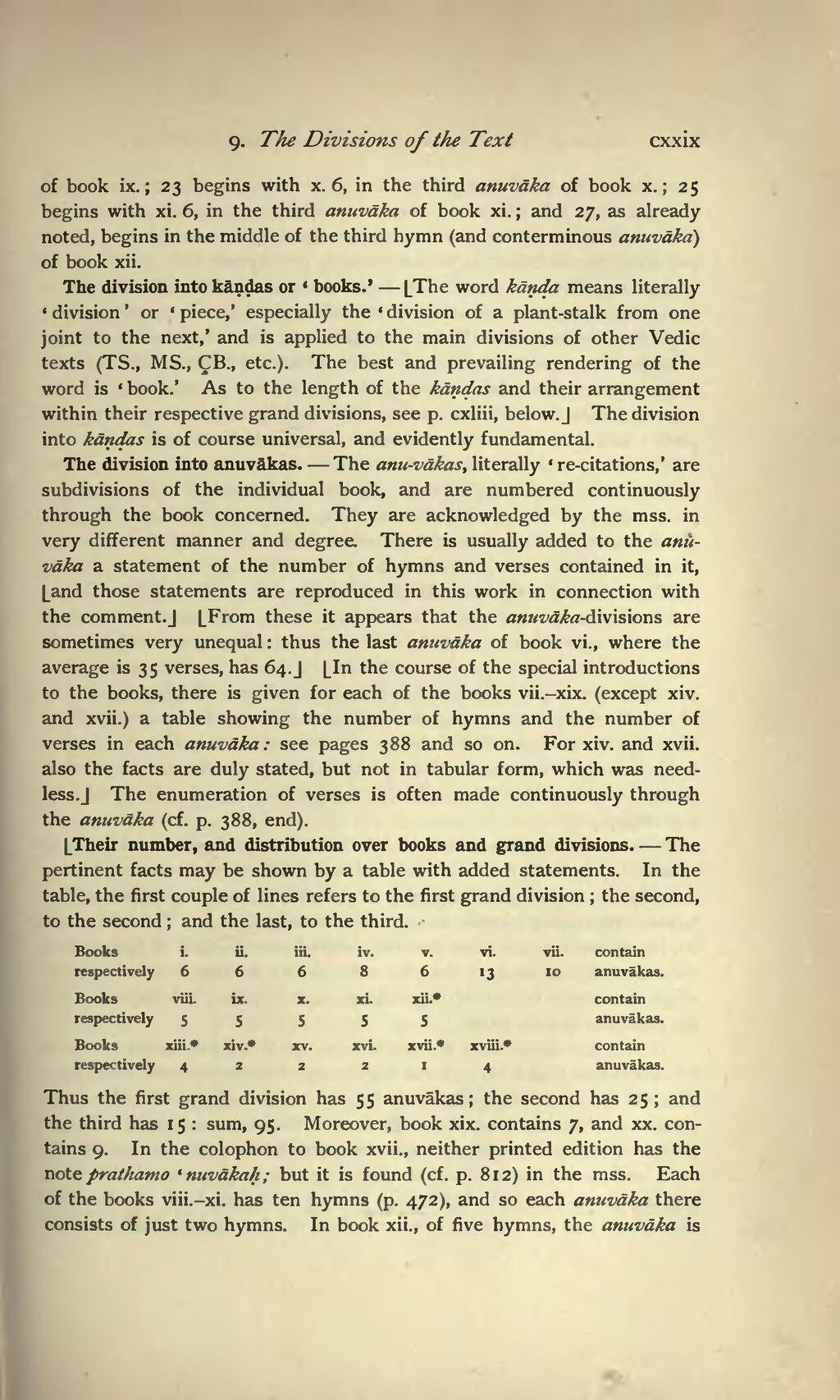of book ix.; 23 begins with x. 6, in the third anuvāka of book x.; 25 begins with xi. 6, in the third anuvāka of book xi.; and 27, as already noted, begins in the middle of the third hymn (and conterminous anuvāka) of book xii.
The division into kāṇḍas or 'books.—⌊The word kāṇḍa means literally 'division' or 'piece,' especially the 'division of a plant-stalk from one joint to the next,' and is applied to the main divisions of other Vedic texts (TS., MS., ÇB., etc.). The best and prevailing rendering of the word is 'book.' As to the length of the kaṇḍas and their arrangement within their respective grand divisions, see p. cxliii, below. The division into kāṇḍas is of course universal, and evidently fundamental.
The division into anuvākas.—The anu-vākas, literally 're-citations,' are subdivisions of the individual book, and are numbered continuously through the book concerned. They are acknowledged by the mss. in very different manner and degree. There is usually added to the anuvāka a statement of the number of hymns and verses contained in it, ⌊and those statements are reproduced in this work in connection with the comment.⌋ ⌊From these it appears that the anuvāka-divisions are sometimes very unequal: thus the last anuvāka of book vi., where the average is 35 verses, has 64.⌋ ⌊In the course of the special introductions to the books, there is given for each of the books vii.-xix. (except xiv. and xvii.) a table showing the number of hymns and the number of verses in each anuvāka: see pages 388 and so on. For xiv. and xvii. also the facts are duly stated, but not in tabular form, which was needless.⌋ The enumeration of verses is often made continuously through the anuvāka (cf. p. 388, end).
⌊Their number, and distribution over books and grand divisions.—The pertinent facts may be shown by a table with added statements. In the table, the first couple of lines refers to the first grand division; the second, to the second; and the last, to the third.
| Books | i. | ii. | iii. | iv. | v. | vi. | vii. | contain |
| respectively | 6 | 6 | 6 | 8 | 6 | 13 | 10 | anuvākas. |
| Books | viii. | ix. | x. | xi. | xii.* | contain | ||
| respectively | 5 | 5 | 5 | 5 | 5 | anuvākas. | ||
| Books | xiii.* | xiv.* | xv. | xvi. | xvii.* | xviii.* | contain | |
| respectively | 4 | 2 | 2 | 2 | 1 | 4 | anuvākas. |
Thus the first grand division has 55 anuvākas; the second has 25; and the third has 15: sum, 95. Moreover, book xix. contains 7, and xx. contains 9. In the colophon to book xvii., neither printed edition has the note prathamo ‘nuvākaḥ; but it is found (cf. p. 812) in the mss. Each of the books viii.-xi. has ten hymns (p. 472), and so each anuvāka there consists of just two hymns. In book xii., of five hymns, the anuvāka is
